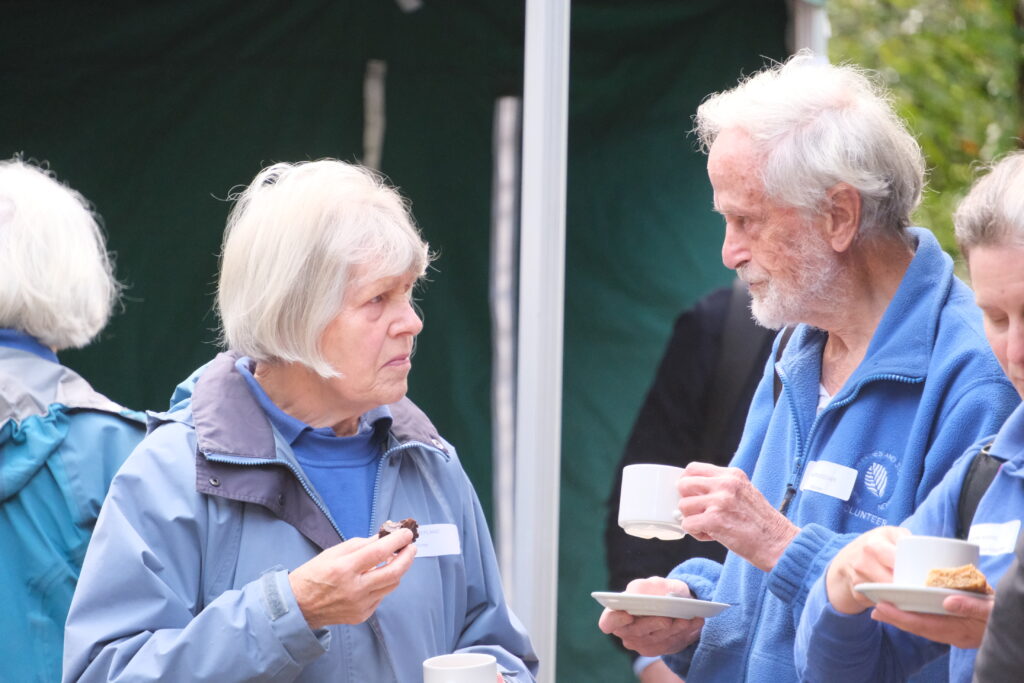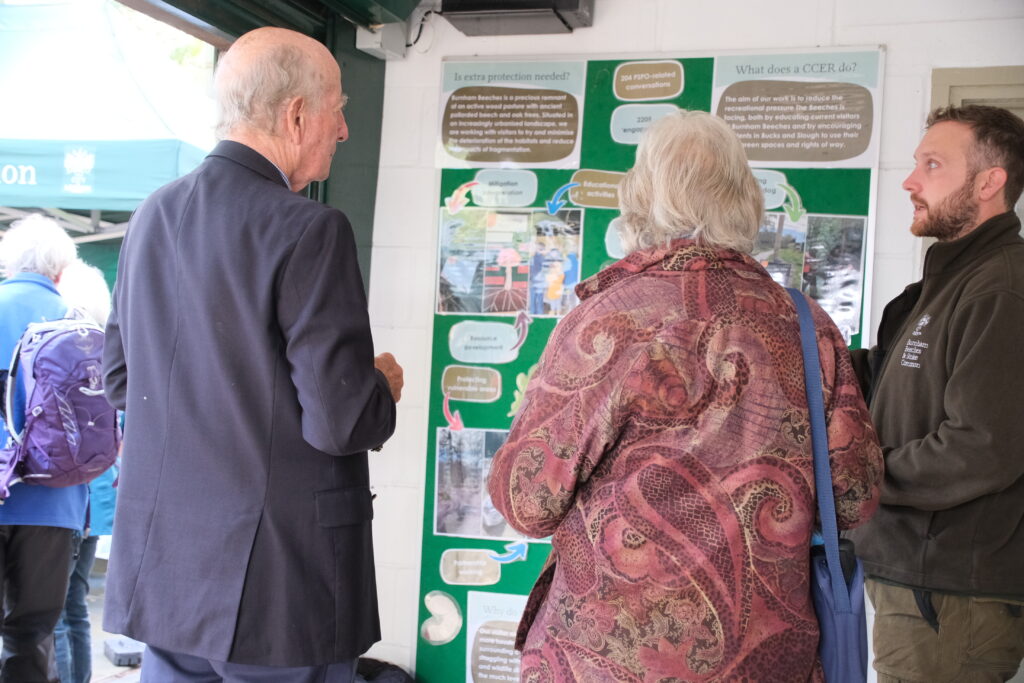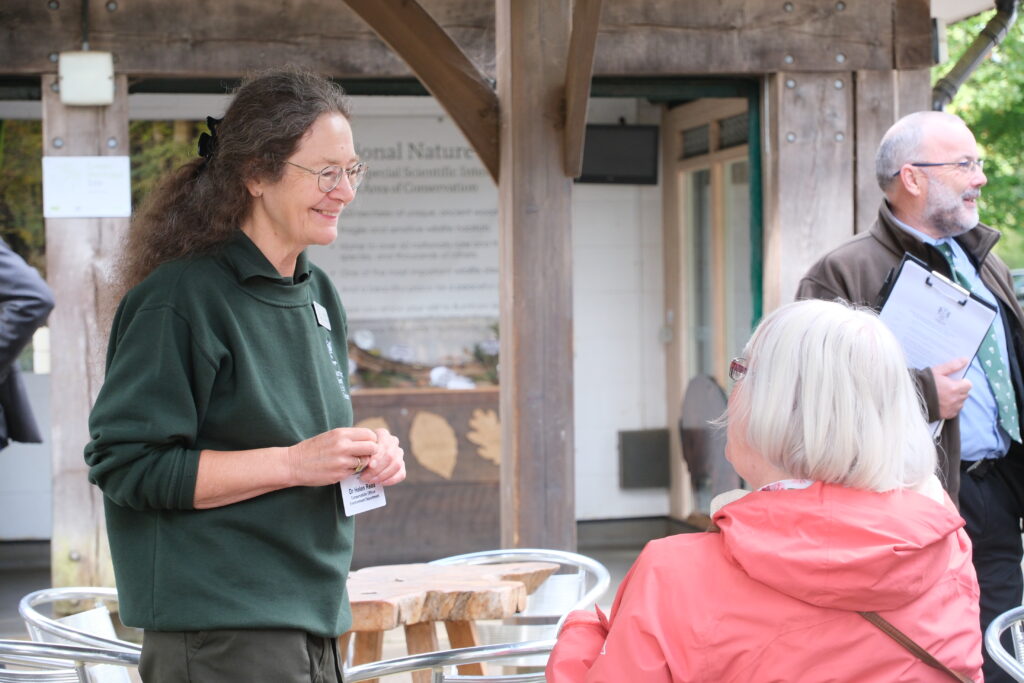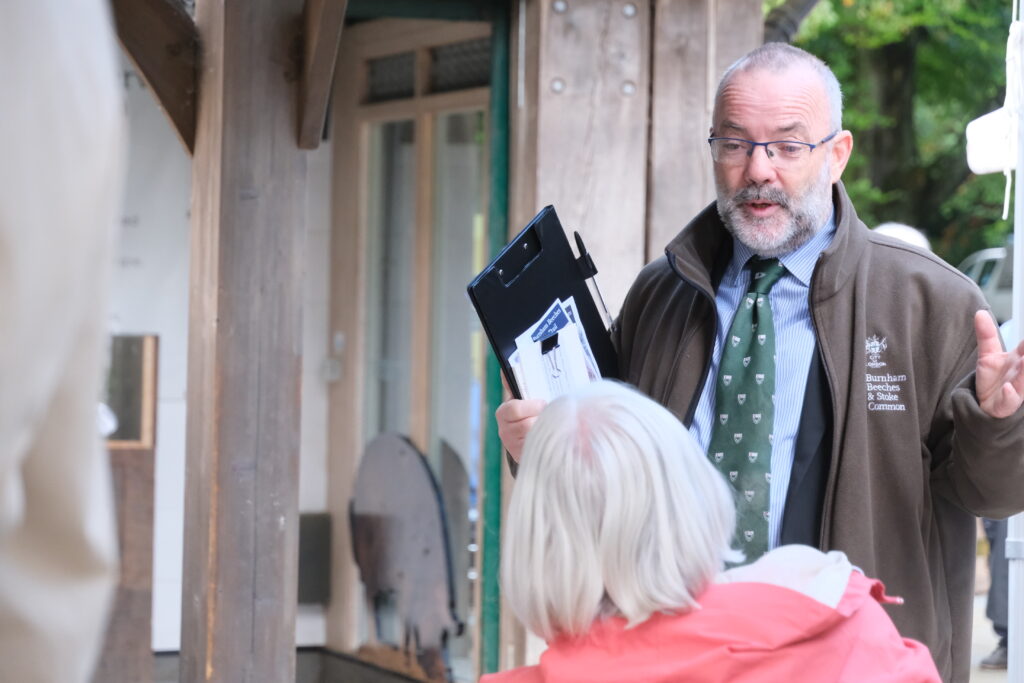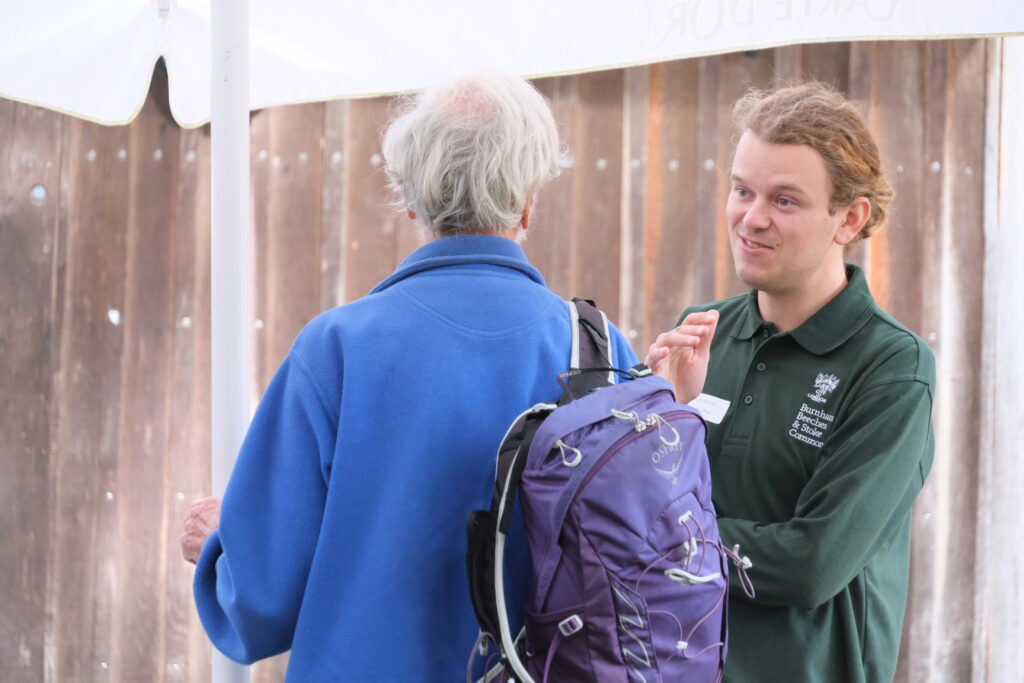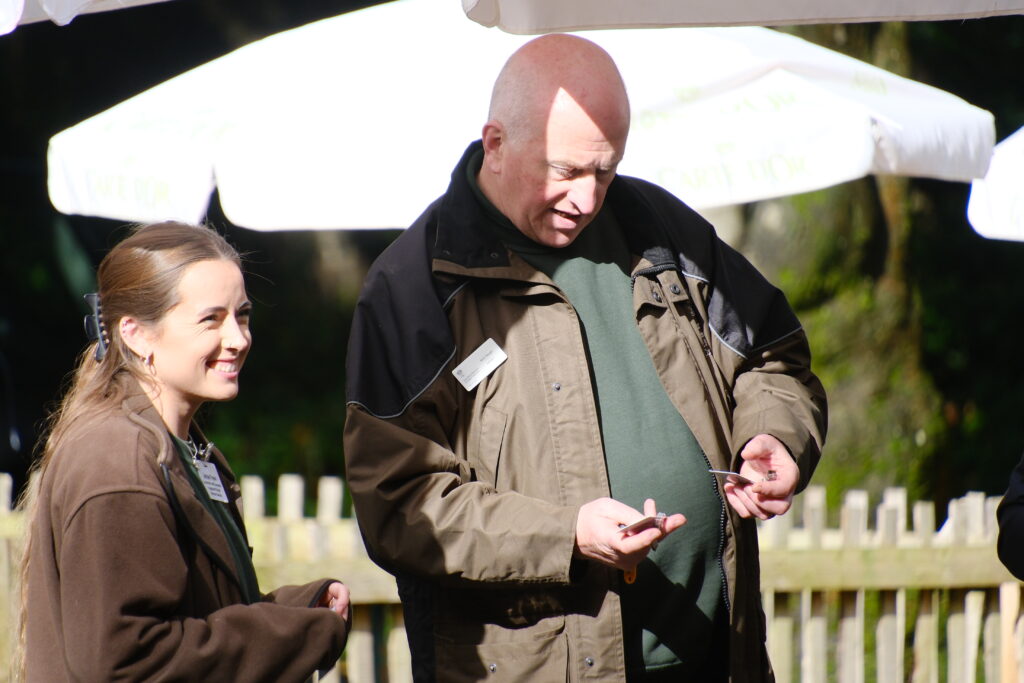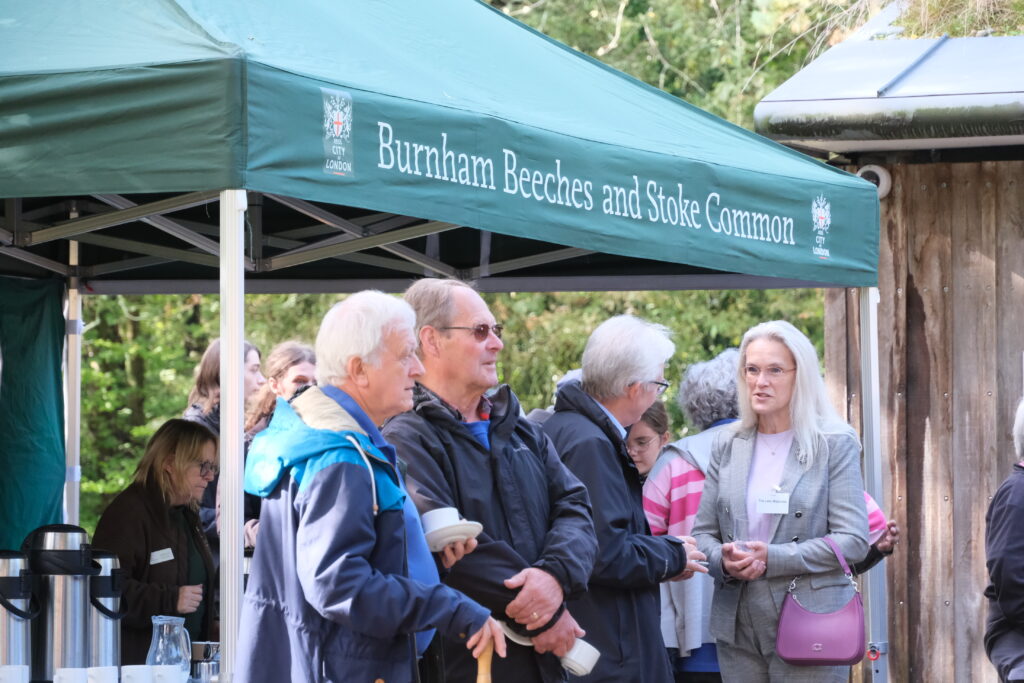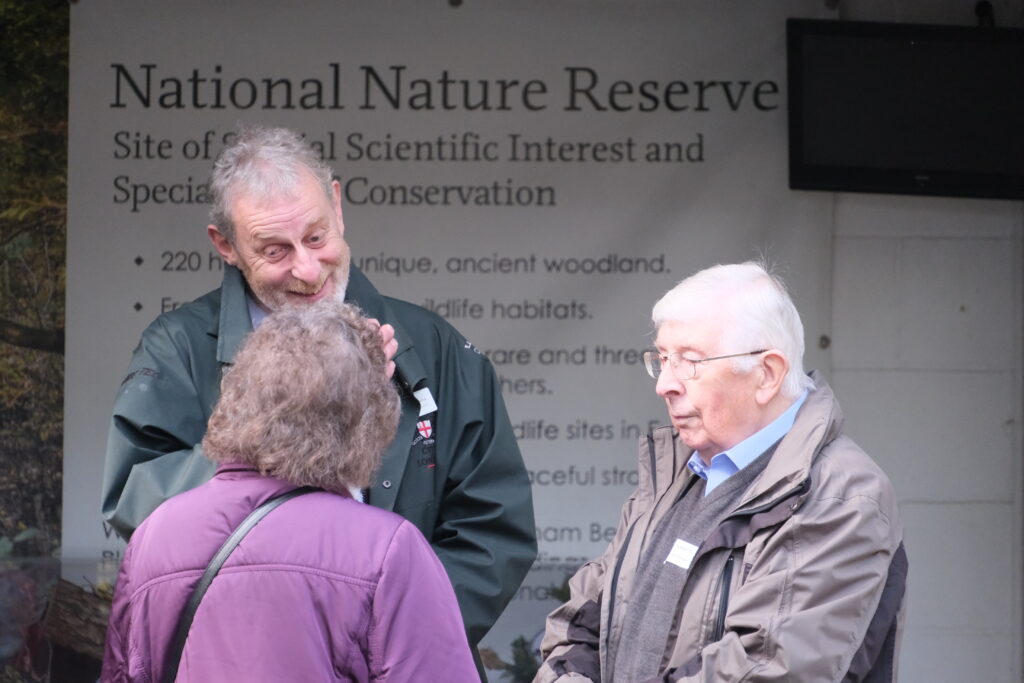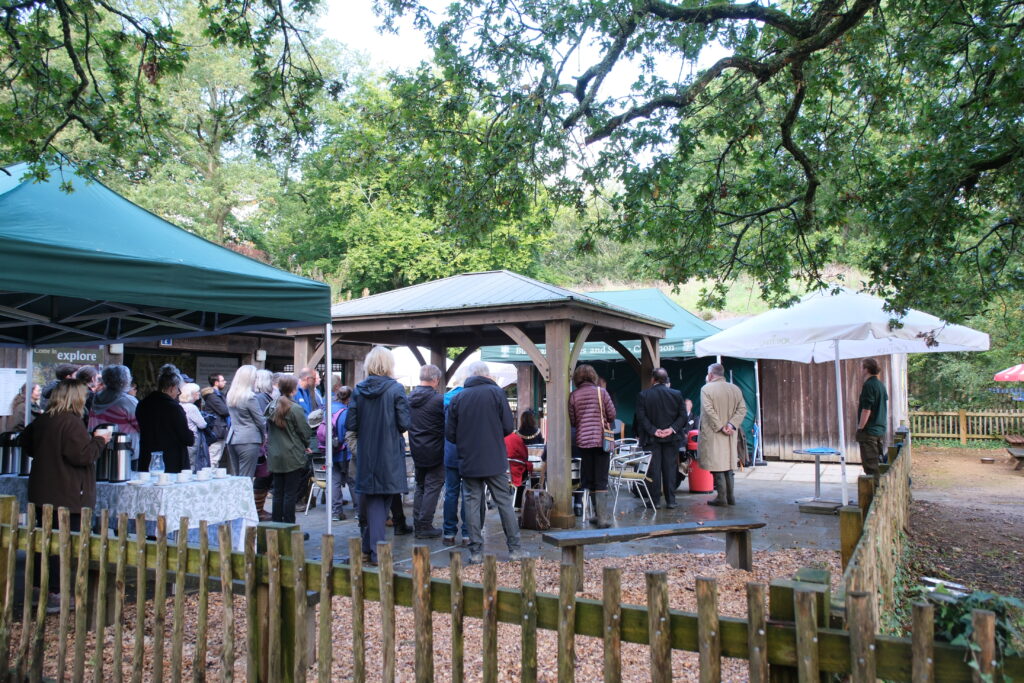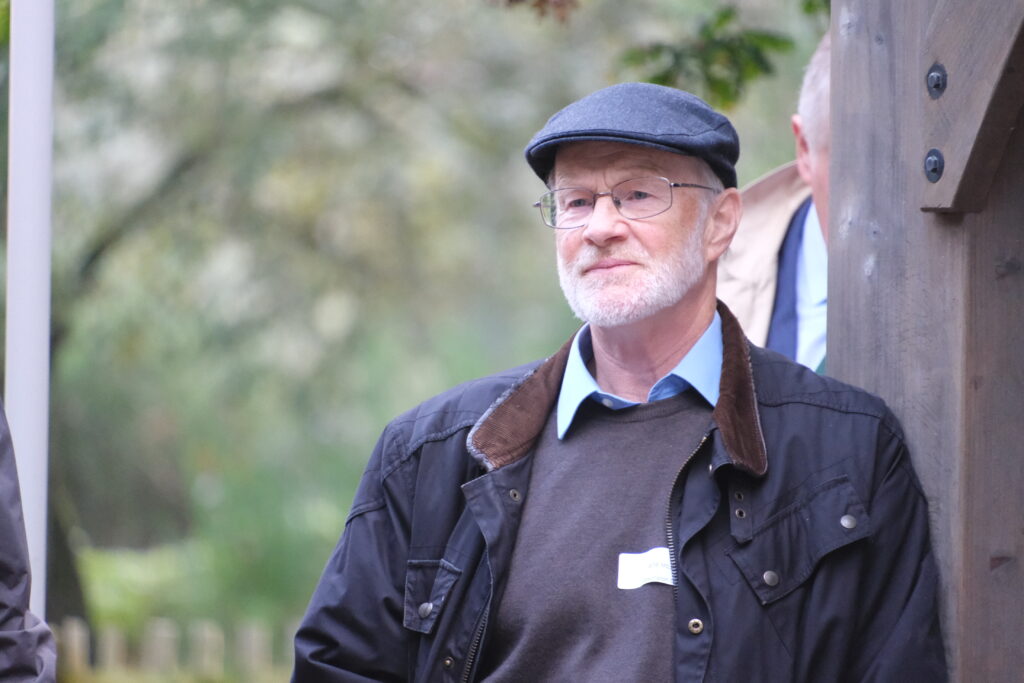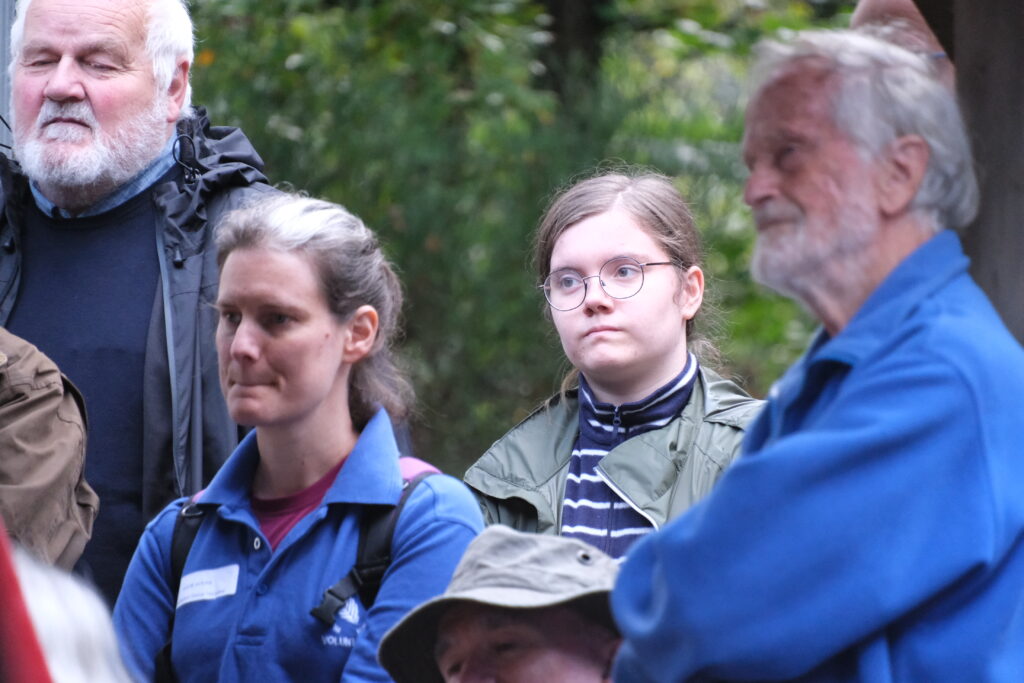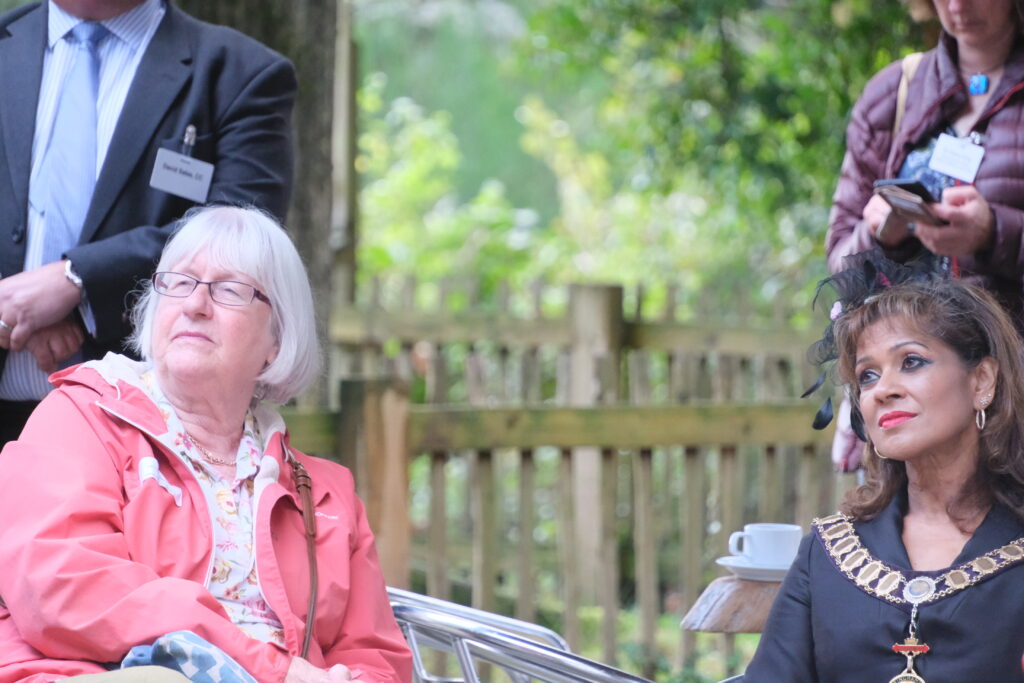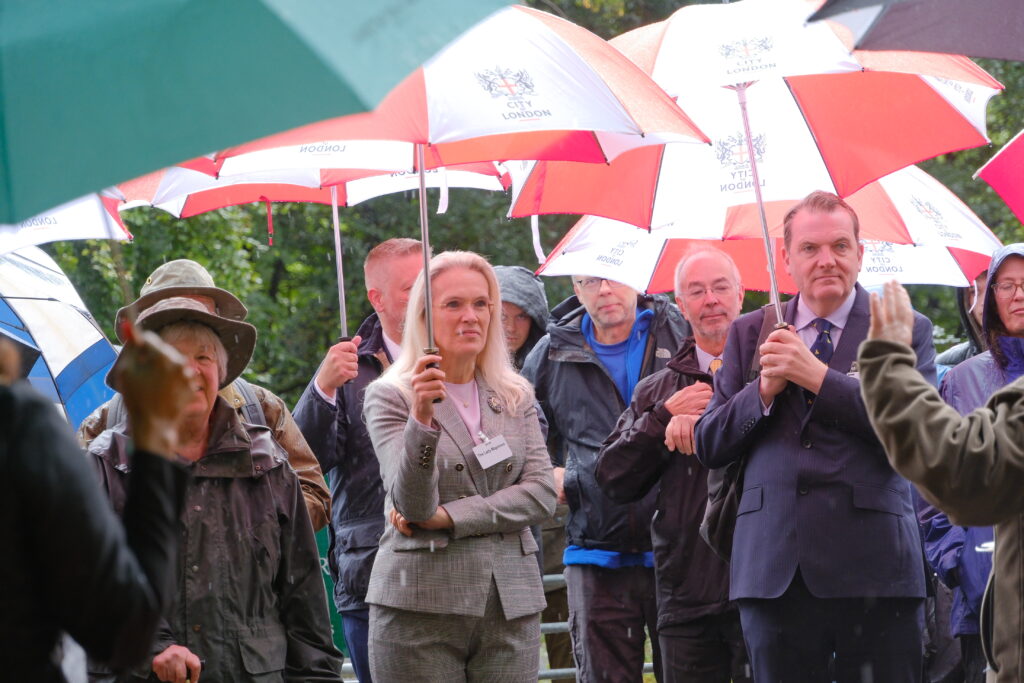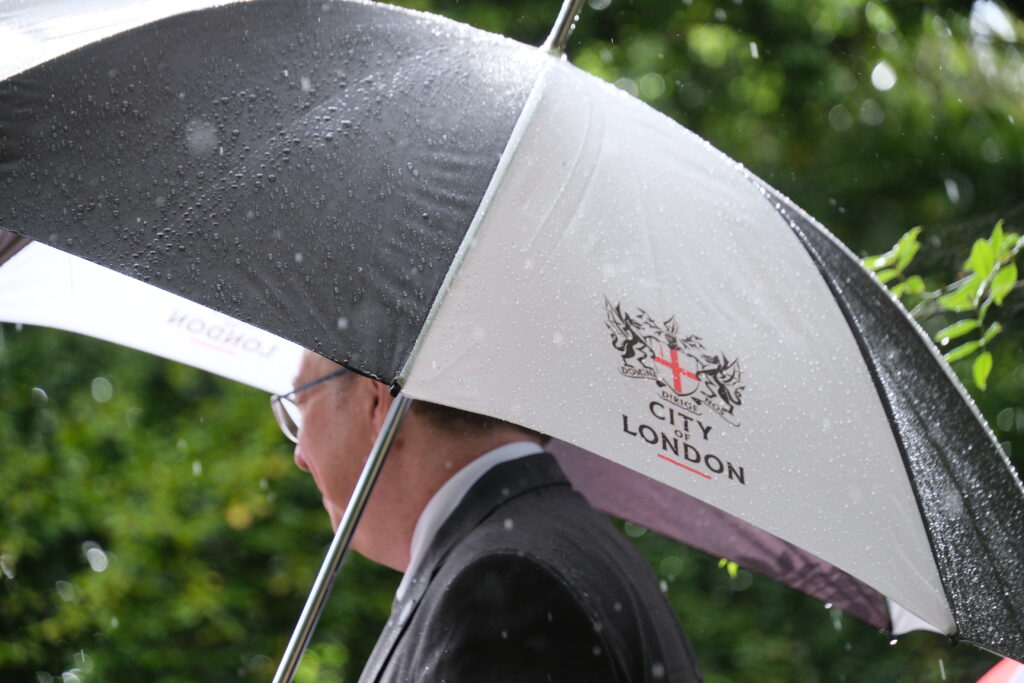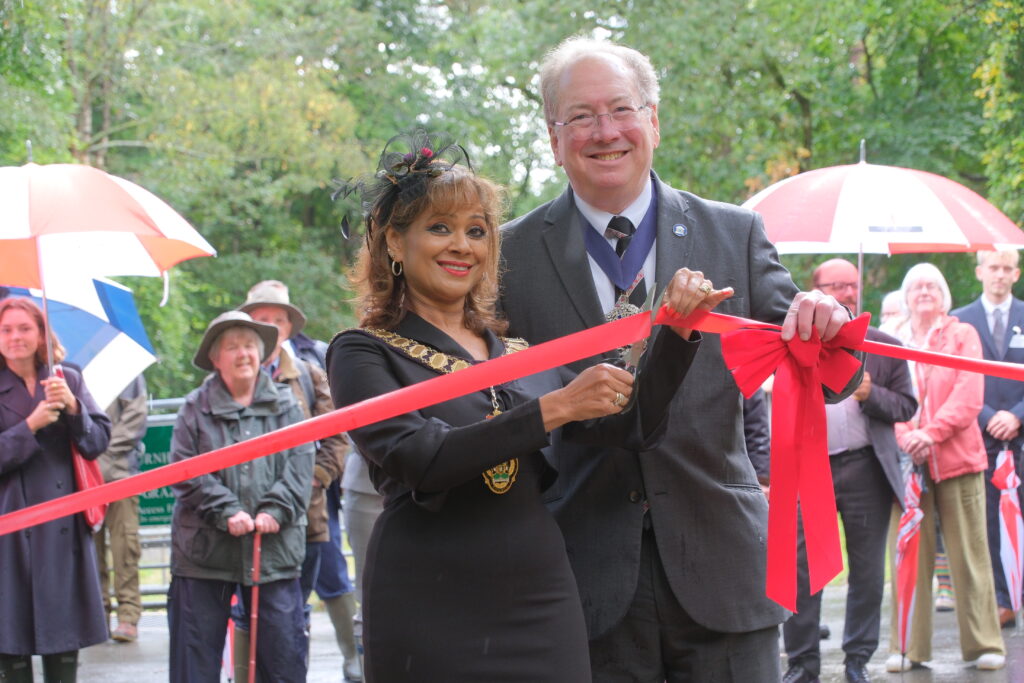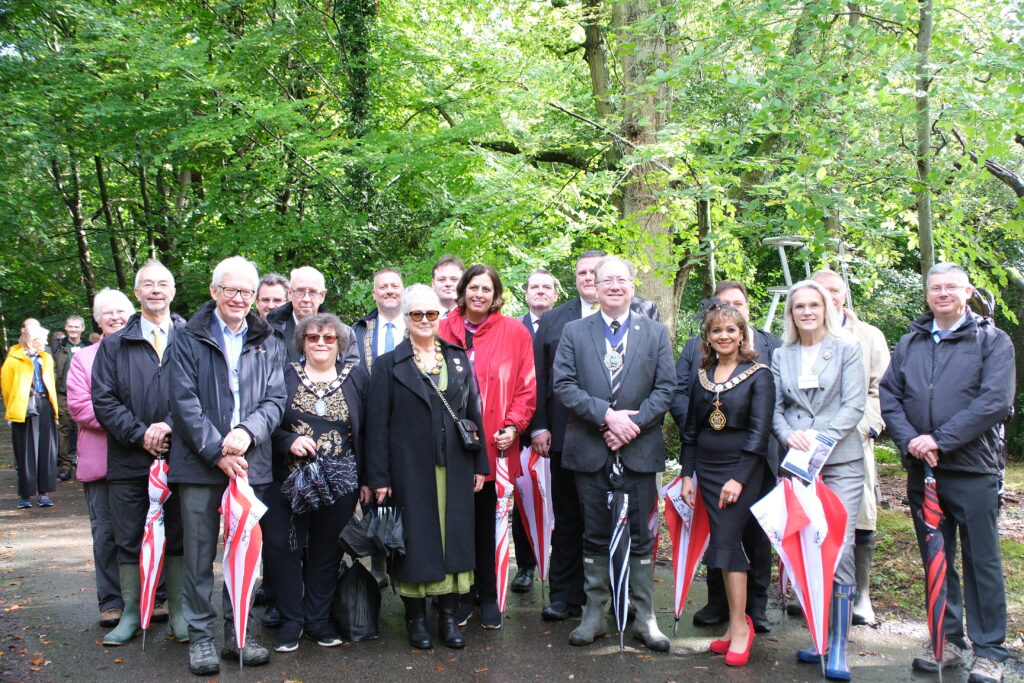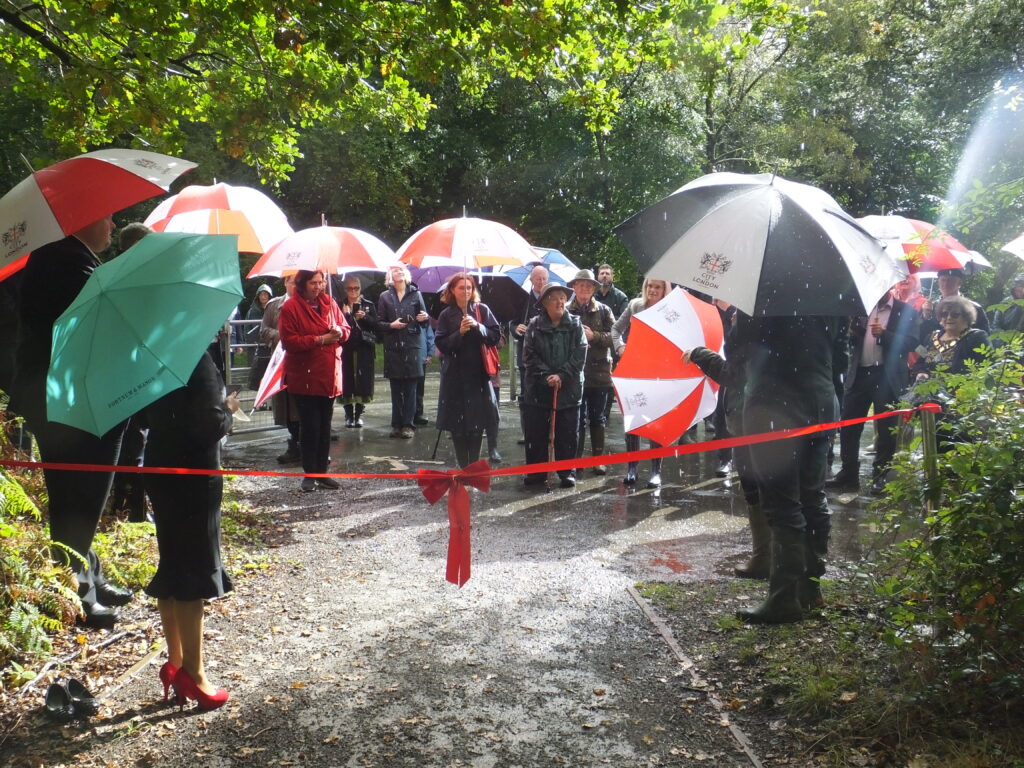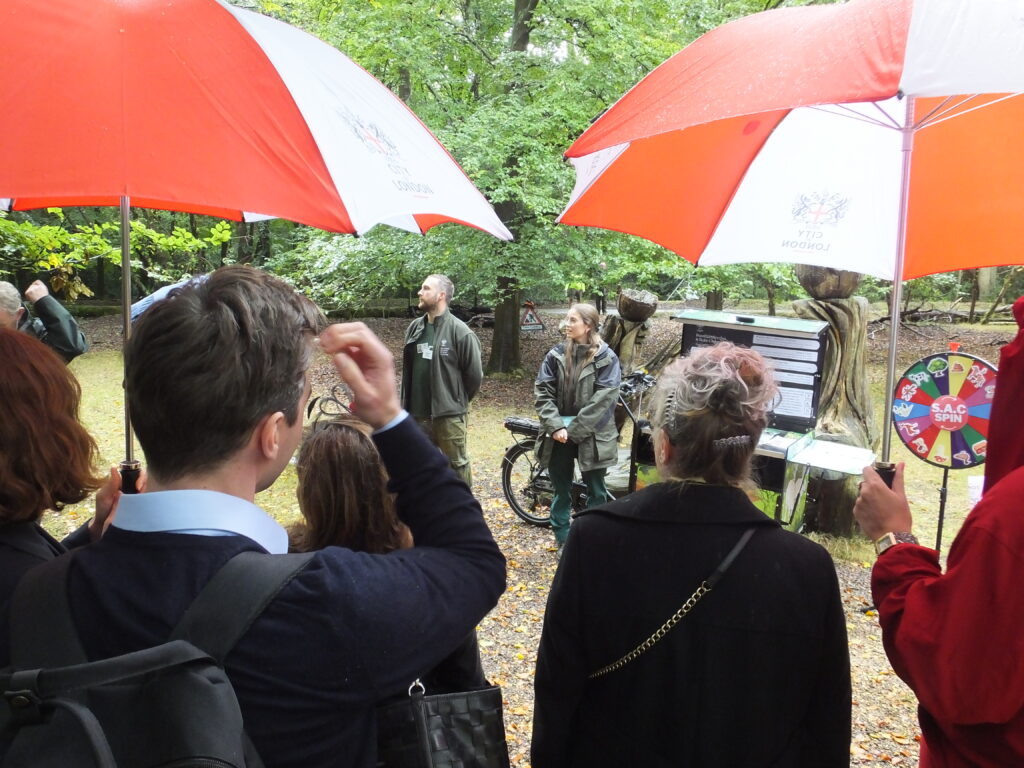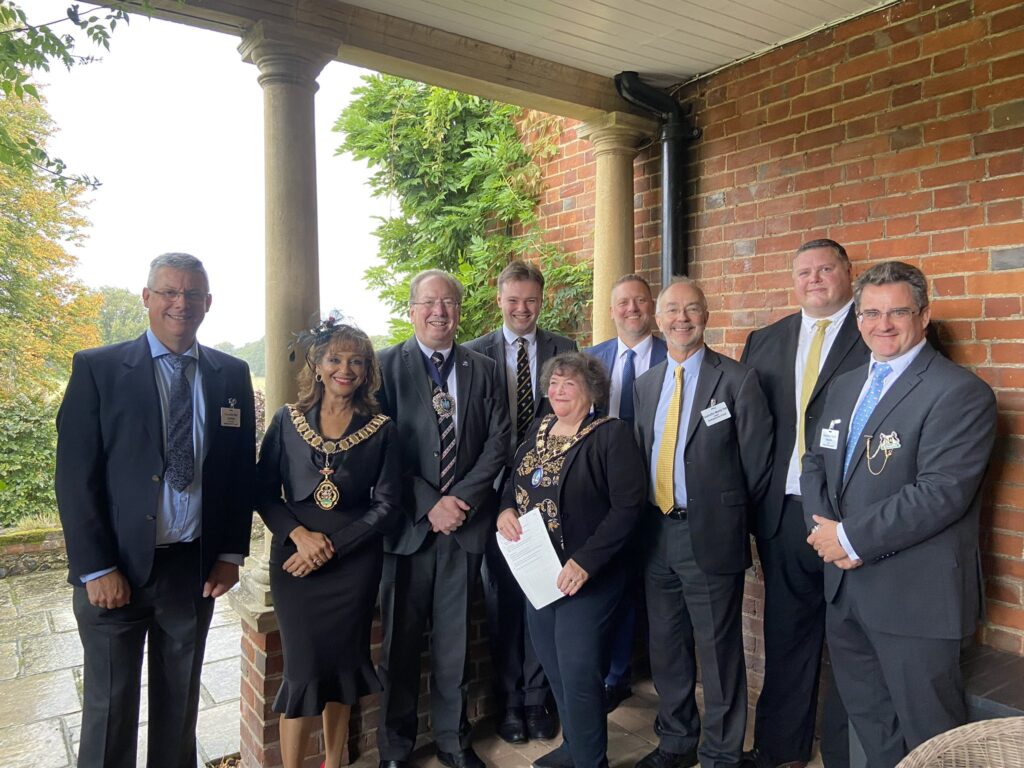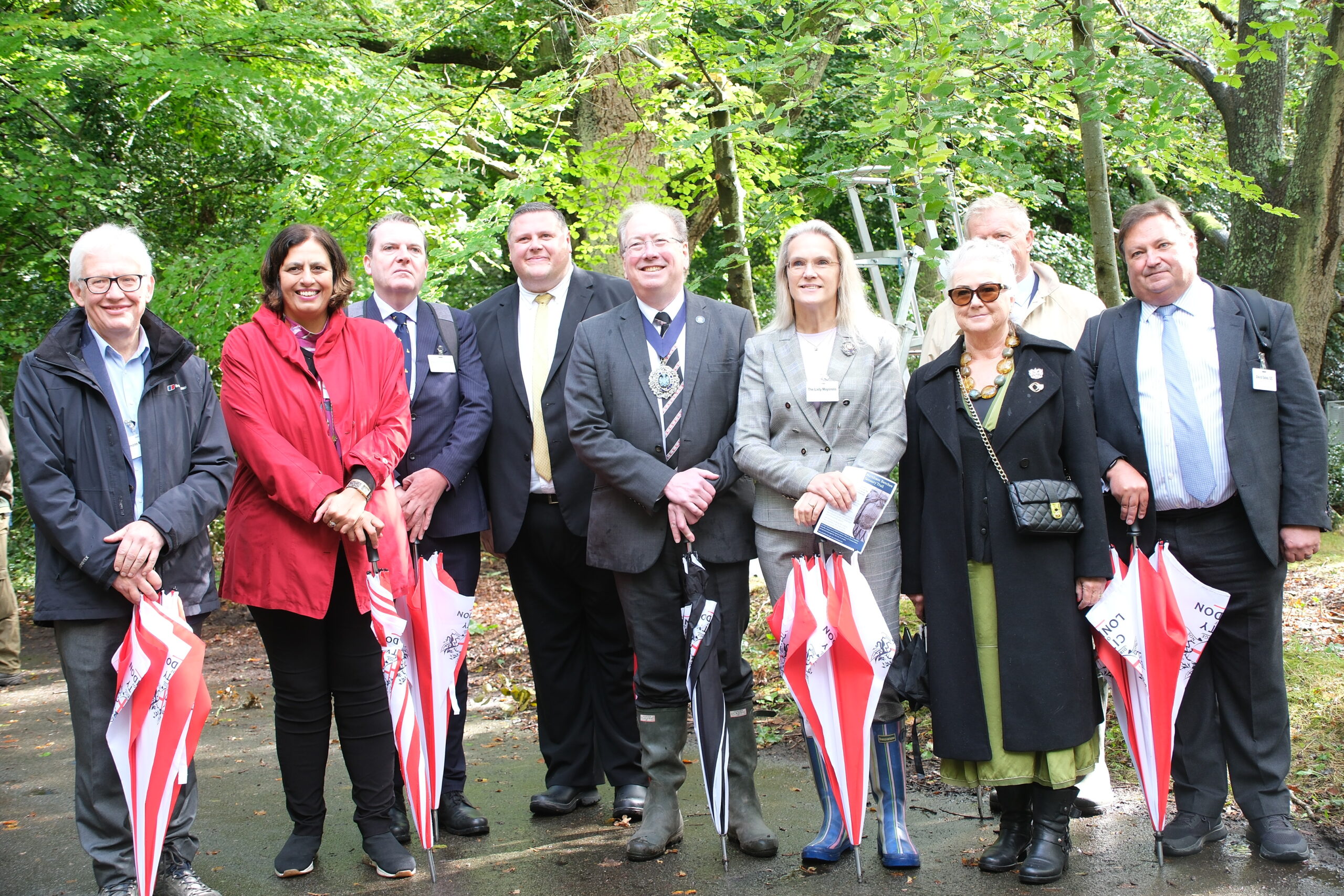Today, I was delighted to welcome The Rt Hon the Lord Mayor and Lady Mayoress of the City of London to Burnham Beeches in Buckinghamshire as part of an annually scheduled visit.
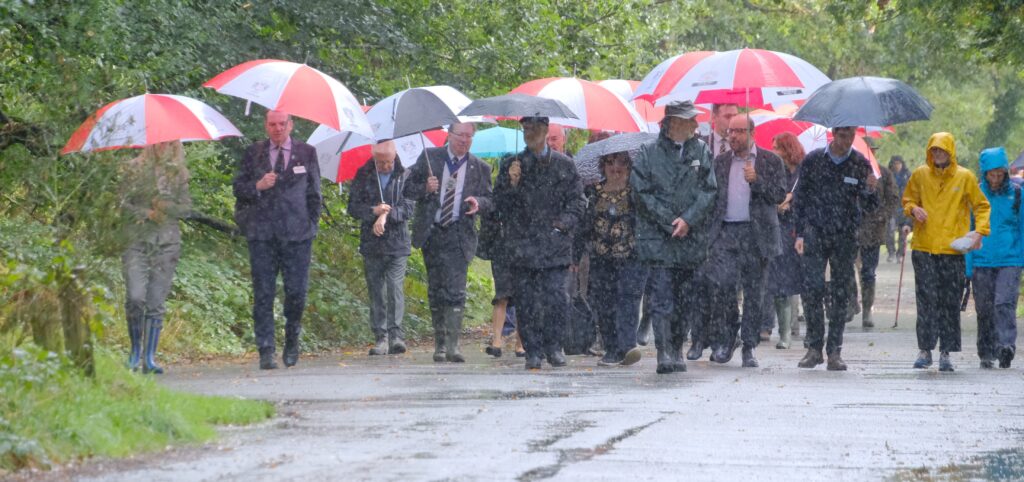
Burnham Beeches comprises of 220 hectares (540 acres) of ancient woodland, heath, wood pasture and wetland. It is a Special Area of Conservation, a Site of Special Scientific Interest and a National Nature Reserve. Since 1879, it has been owned and maintained by the City of London Corporation as part of its portfolio of 11,000 acres of open spaces retained for public recreation and enjoyment across 4 counties in England. It welcomes over 600,000 visitors each year and its natural capital valued at £3.6m annually in public benefits. It operates as a registered charity, overseen by the City’s Epping Forest and Commons Committee.
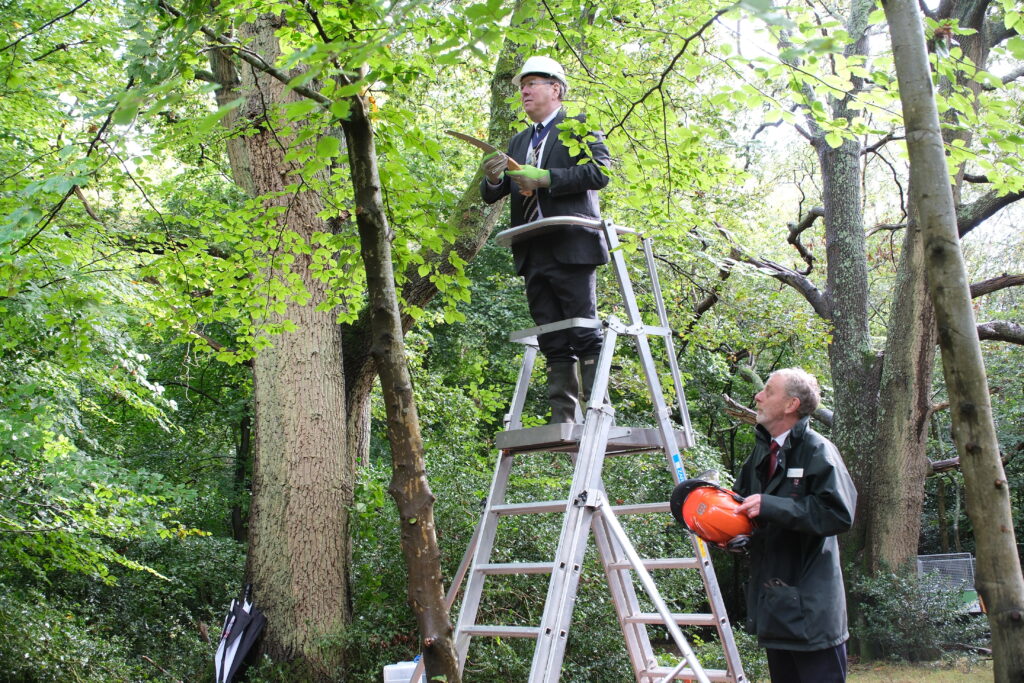
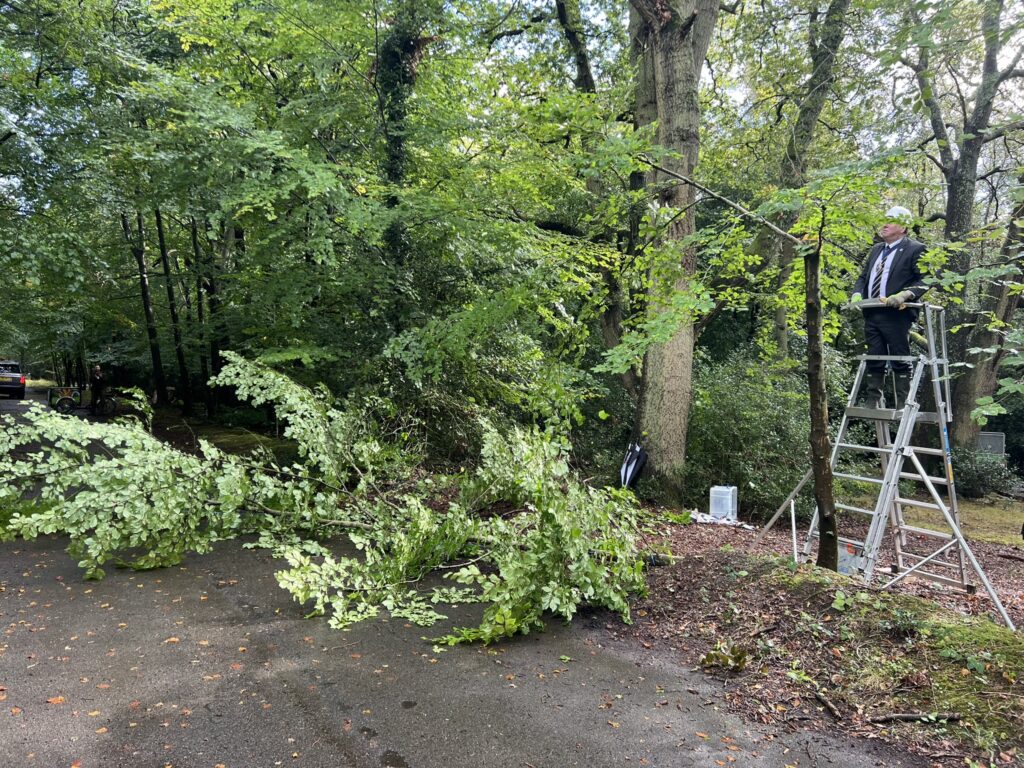
It is tradition for the Lord Mayor of the City of London to pollard a beech tree each year to demonstrate the importance of this conservation technique in prolonging the life of ancient and veteran trees, by promoting the growth of a dense head of foliage and branches.
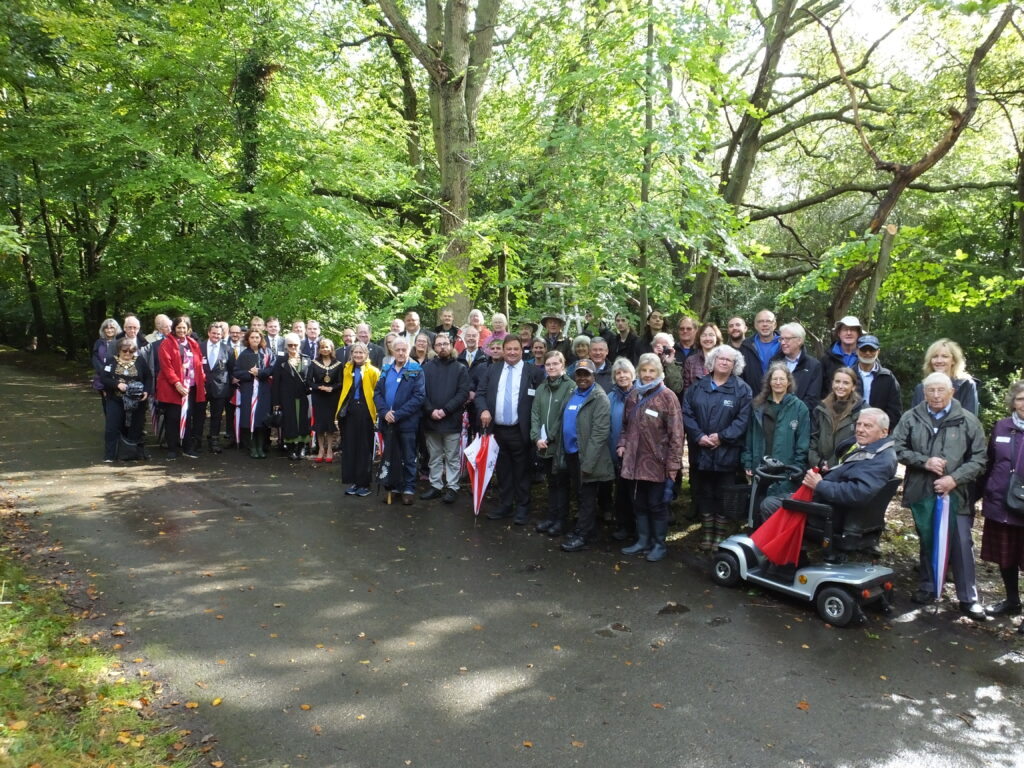
In his remarks to local volunteers, the Lord Mayor said: “There are many items associated with the office of Lord Mayor: the tricorn hat, the ermine robe, and happily today, the pruning saw! During the past year a whopping 5,769 hours of voluntary work have been recorded here at Burnham Beeches – from the regular Tuesday and weekend practical work sessions, which includes assistance from students of Berkshire College of Agriculture, to corporate volunteering groups, ecology, air quality, and hydrology monitoring, admin support volunteers, and even livestock lookers! Crucially, over the coming months volunteers will also be providing some much-needed oversight of my…how shall I say it…’handiwork’ this morning, so a personal thank you from me for helping to maintain this Lord Mayor’s legacy!”
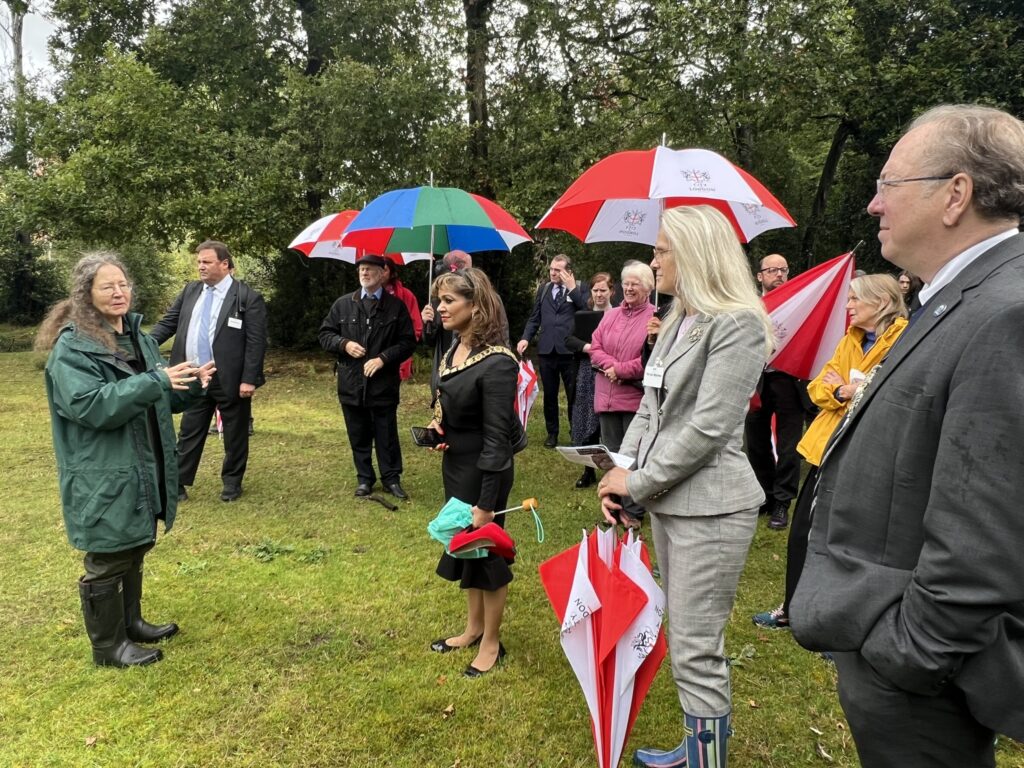
The Lord Mayor and Lady Mayoress also met with Burnham Beeches Conservation Officer, Dr. Helen Read, who spoke about the importance of cattle grazing and the introduction of fenceless grazing technology using GPS collars. The Lord Mayor’s pollarded branch was soon recycled by the cattle, who were grateful for a snack.
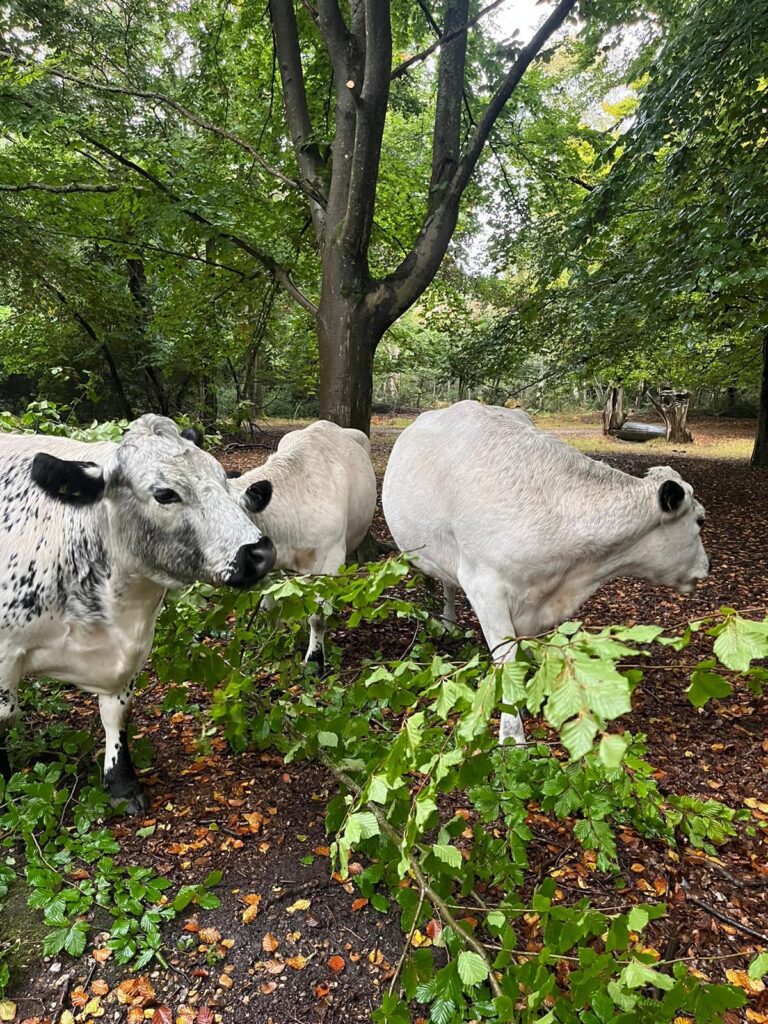
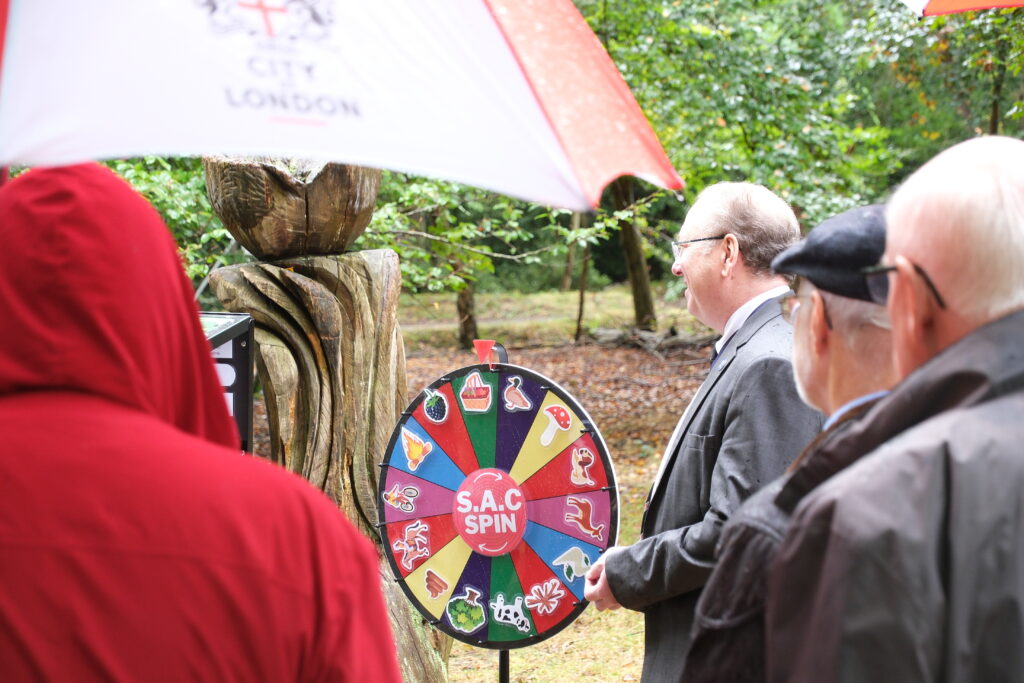
Presentations were also made by the Community Engagement Rangers, which is a joint venture with Buckinghamshire and Slough Councils and funded through developer contributions. The Rangers explained the role they play in helping educate the public on wide variety of topics from livestock and wildlife value, to promoting the respectful use of Burnham Beeches. The Lord Mayor enjoyed a game of ‘SAC Spin’, learning about behaviours which support this Special Area of Conservation and those which do not. The Rangers have also been helping local residents to explore alternative green spaces in the area to reduce the visitor pressure on Burnham Beeches.
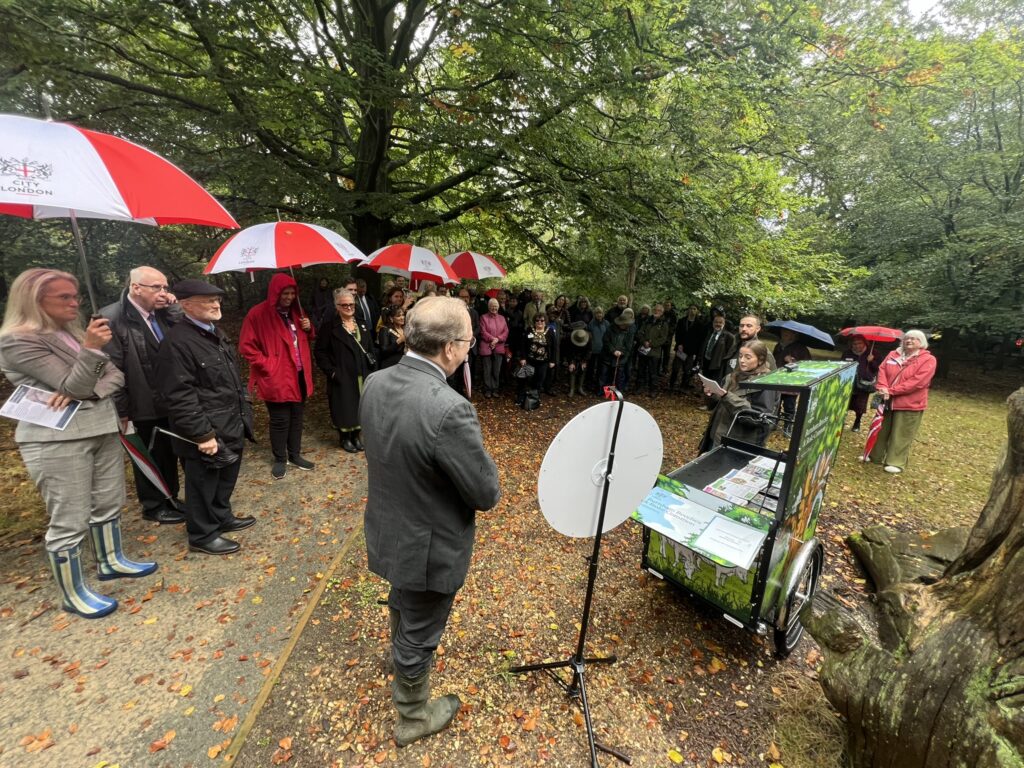
The Lord Mayor’s theme this year has been ‘Connect to Prosper’. He has been hosting a range of Coffee Colloquies at the Mansion House focused on each of the United Nations Sustainable Development Goals. In his first coffee colloquy outside of the Square Mile, the Lord Mayor joined guest speakers including Caroline Svendsen (Senior Advisor, Natural England), Councillor Martin Tett (Leader, Buckinghamshire Council) and Geoff Sinclair (Superintendent, Burnham Beeches) exploring the theme ‘Space for Nature?’
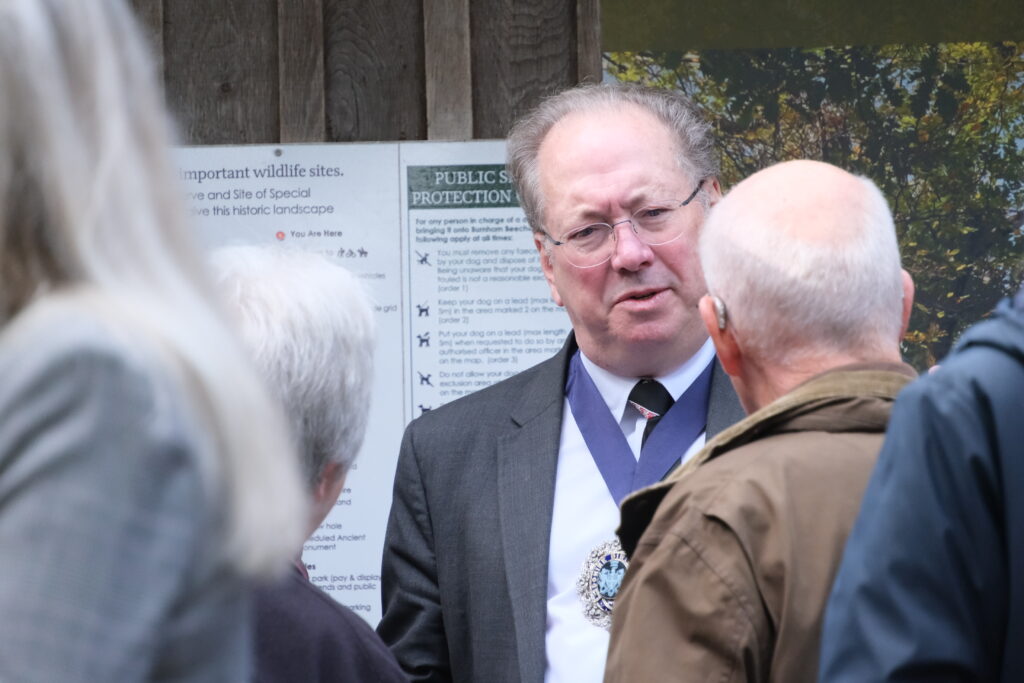
In his presentation, the Lord Mayor explained, “Gems are priceless, but nature is worthless!”. He went on to explain, “Reasonable estimates for the optimal sustainable global population – which themselves are anthropocentric – sit at somewhere between 1.5 and 2 billion people. Our current global population is now just above 8 billion people and we are already believed to have exceeded six of the nine planetary boundaries identified as keeping earth habitable. In other words, we are drawing upon earth’s resources on credit, using more planet than exists – let alone making room for other species. Worse still, the UN estimates that the global population will peak in the year 2084 at 10.3 billion people, before decreasing significantly from there. Interventions to expedite that process are unconscionable, but it’s clear we need to handover large chunks of our planet to nature if we are to live sustainably.”
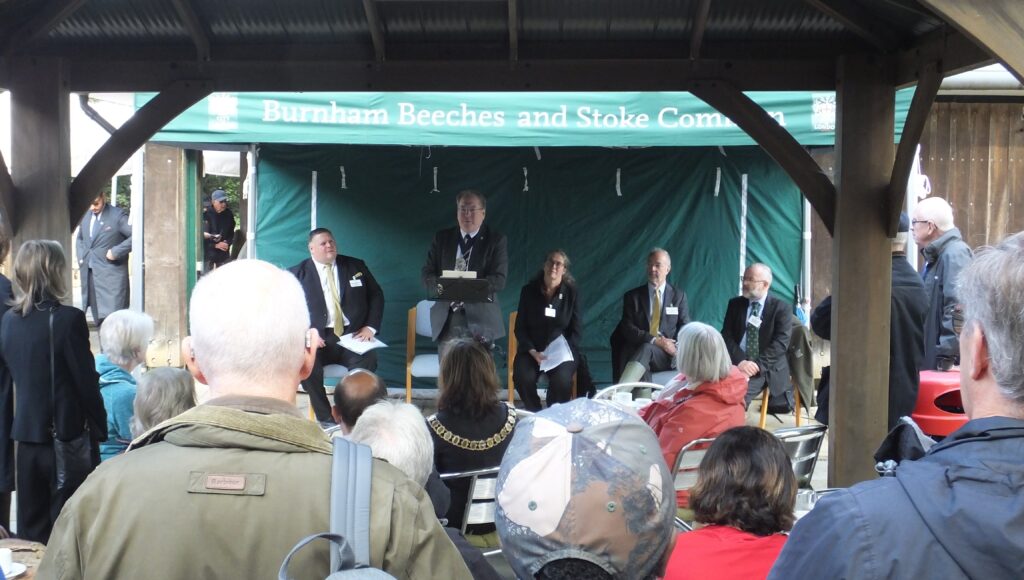
He continued to explain: “Hong Kong uses land value capture in the form of a land value tax, encouraging the more creative use of brownfield land and disincentivising urban sprawl. So the question is, do we as society want to enforce carbon prices and hard set-asides with steep payments? Or do we just like the paperwork of ESG? By combining the abundant talent of the science and tech communities with the unrivalled financial nous of the City’s business community, we stand the best chance of enacting meaningful change.”
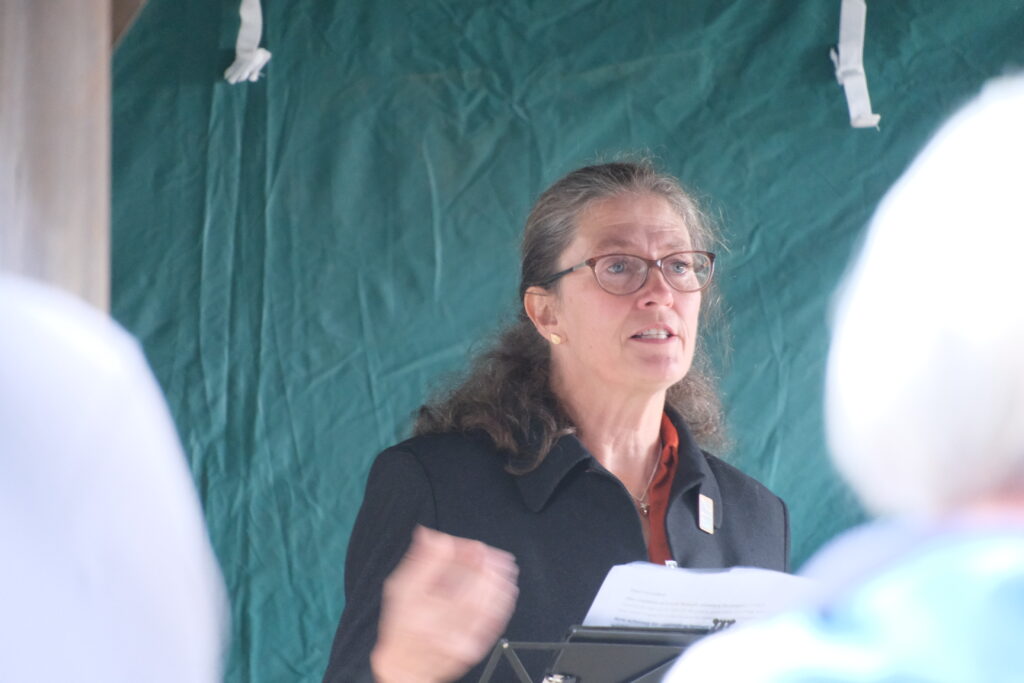
Natural England’s speaker explained the role that government departments are playing in planning processes to both protect existing natural assets, whilst creating new habitats and nature recovery partnerships. She emphasised the importance of working at landscape scale, beyond traditional borders and collaborating to improve biodiversity.
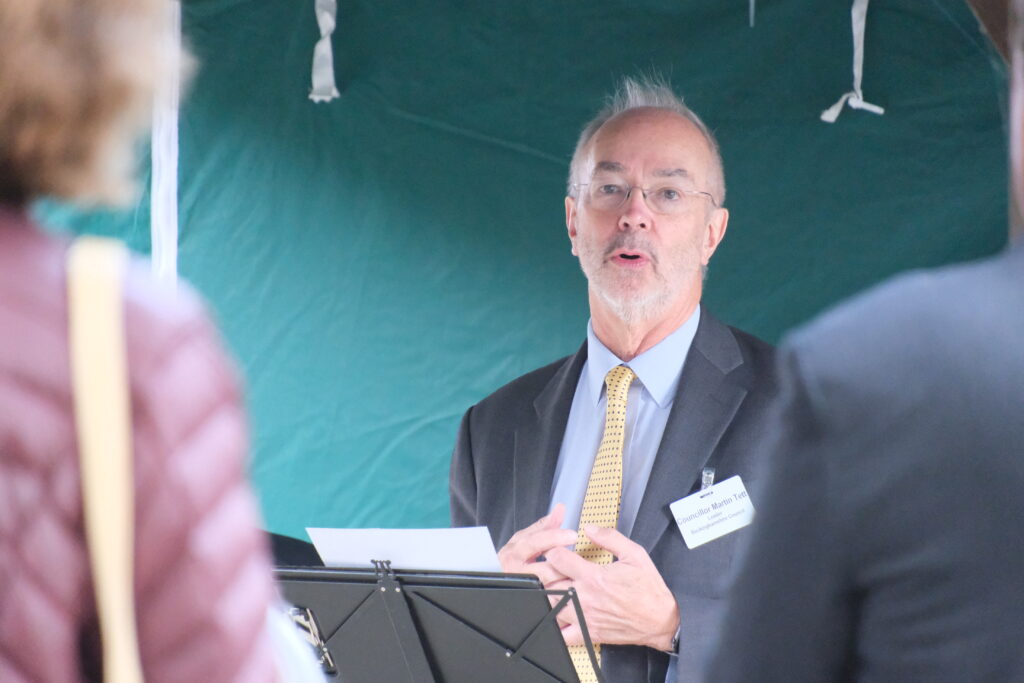
The Leader of Buckinghamshire Council spoke about how important sites like Burnham Beeches are to the county. He highlighted the challenging path politicians have to tread to meet local demands in housing supply and growing local economies, whilst wanting to protect the Green Belt. He provided an overview of the government’s proposed changes to the National Planning Policy Framework which will invariably increase pressures in Buckinghamshire to allocate more green space for development to meet mandatory government targets.
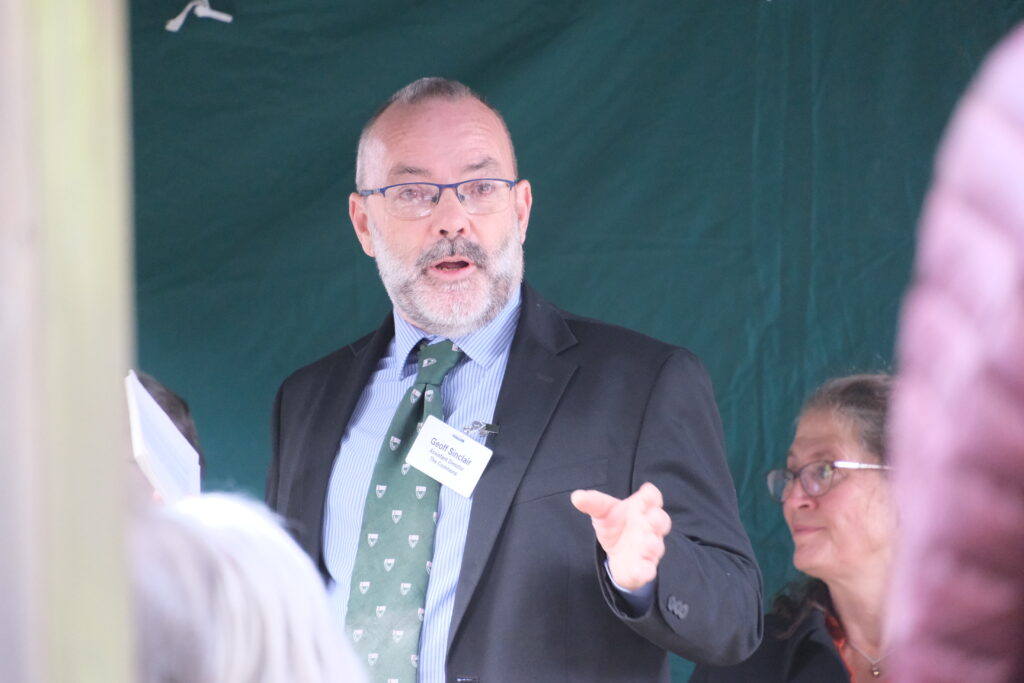
The Superintendent of The Commons spoke about the importance of small changes the local community can make which would result in having a collective impact on improving biodiversity locally. He praised Buckinghamshire Council for their Wilder Road Verges scheme which had helped wildflowers across the County to thrive along the road network and in other public open spaces. He said: “There are 50 hectares of gardens around Burnham Beeches, as an underutilised asset in our biodiversity conservation toolbox. Changing our gardening culture, to one where wildlife friendly practices underpin it, will provide crucial benefits for the biodiversity of Burnham Beeches.” He encouraged local residents to donate just 20% of their gardens for wildlife.
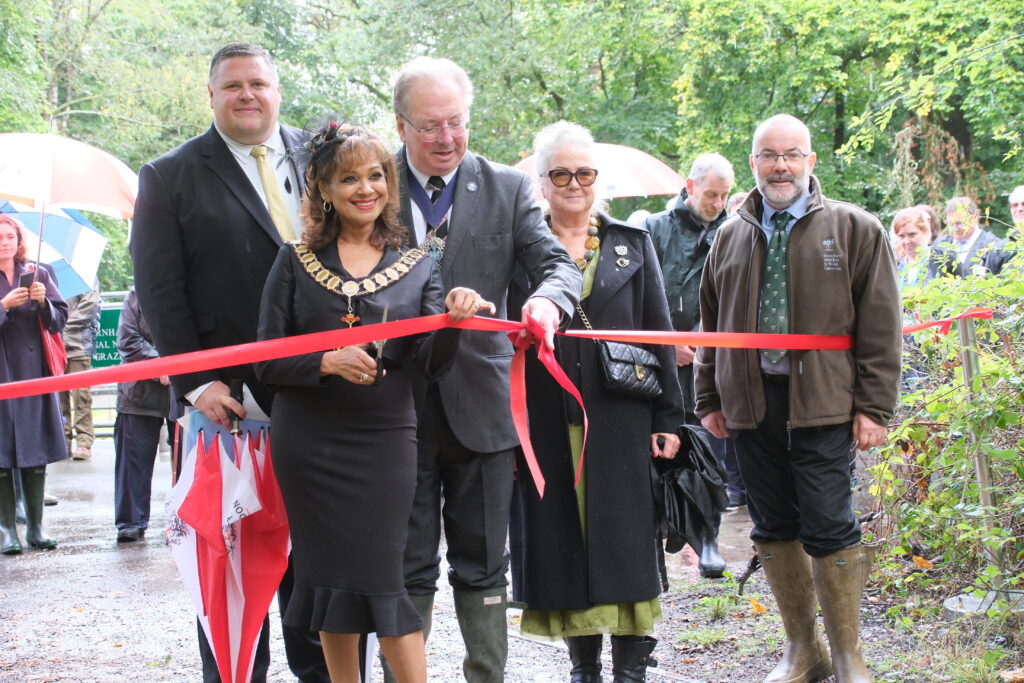
The Chairman of Buckinghamshire Council, Councillor Mimi Harker joined the Lord Mayor to officially open a new sensory trail at Burnham Beeches. The 1km trail offers an easy access path with minimal slopes, for those less steady on their feet and benches at regular intervals. Eight new oak carved sculptures depicting wildlife which thrives on decaying wood habitat are scattered along the trail, allowing visitors to touch and feel their way along the route. Each sculpture also has a QR code affixed, which will allow visitors to engage in the stories behind each animal and why it’s important to Burnham Beeches.
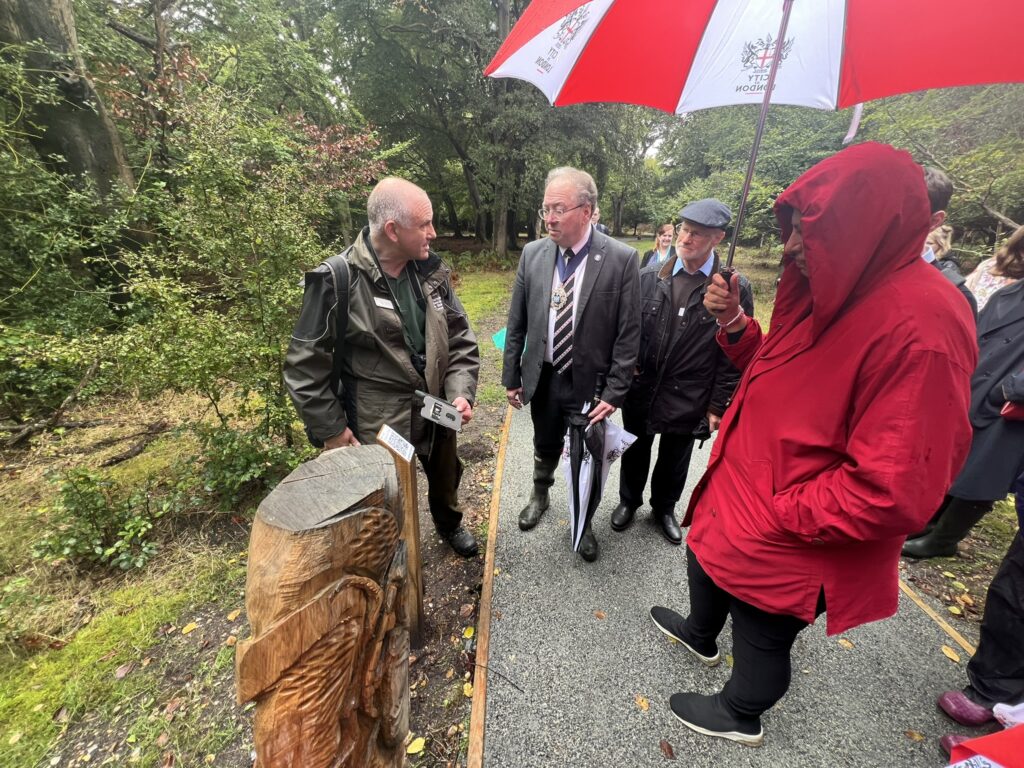
The visit concluded with a lunch at the Chancellor of the Exchequer’s country residence, Dorneywood. Owned by the National Trust and leased to the Dorney Wood Trust, the estate totals 615 acres and has added to the protection of Buckinghamshire by safeguarding the land from urban development spreading north from Maidenhead and Slough.
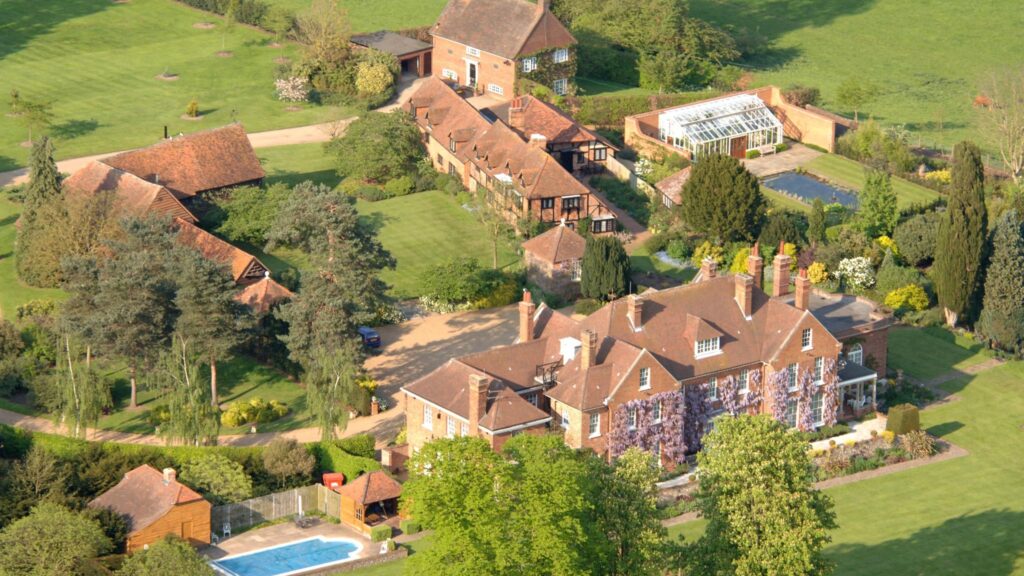
Upon his death in 1954, Lord Courtauld-Thomson left the house and estate to the National Trust with a small endowment of £30,000. He also left a larger endowment of £200,000 in the Dorneywood Thomson Endowment Trust Fund, which is managed by Dorneywood Trust (DWT). Today that fund generates annual income towards the running of the estate.
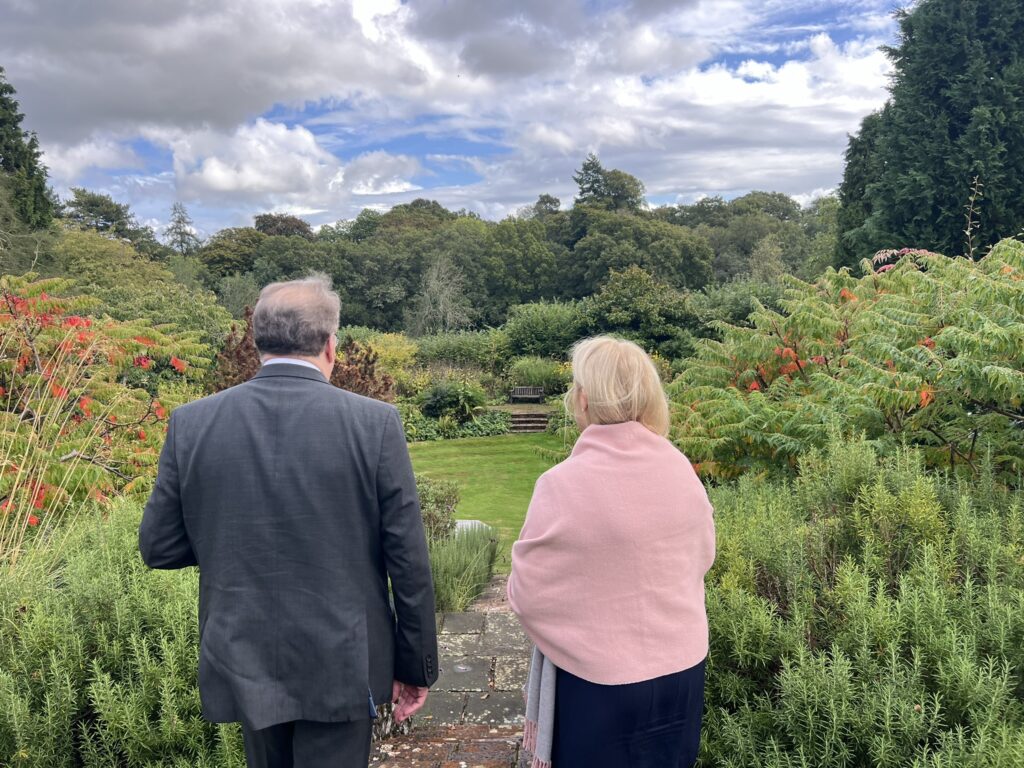
Dorneywood fulfills a similar role to the houses and estates at Chequers (Prime Minister’s residence) and Chevening (Foreign Secretary’s residence), providing a country-house for a Minister of the Crown. If the Prime Minister of the day were to decide that Dorneywood was no longer required in this role then, under the provisions of Lord Courtauld-Thomson’s estate settlement, use of the house would be offered to the American Ambassador or to the Lord Mayor of London. Therefore, in keeping with this historic link, lunch after the Burnham Beeches annual visit is hosted at Dorneywood.
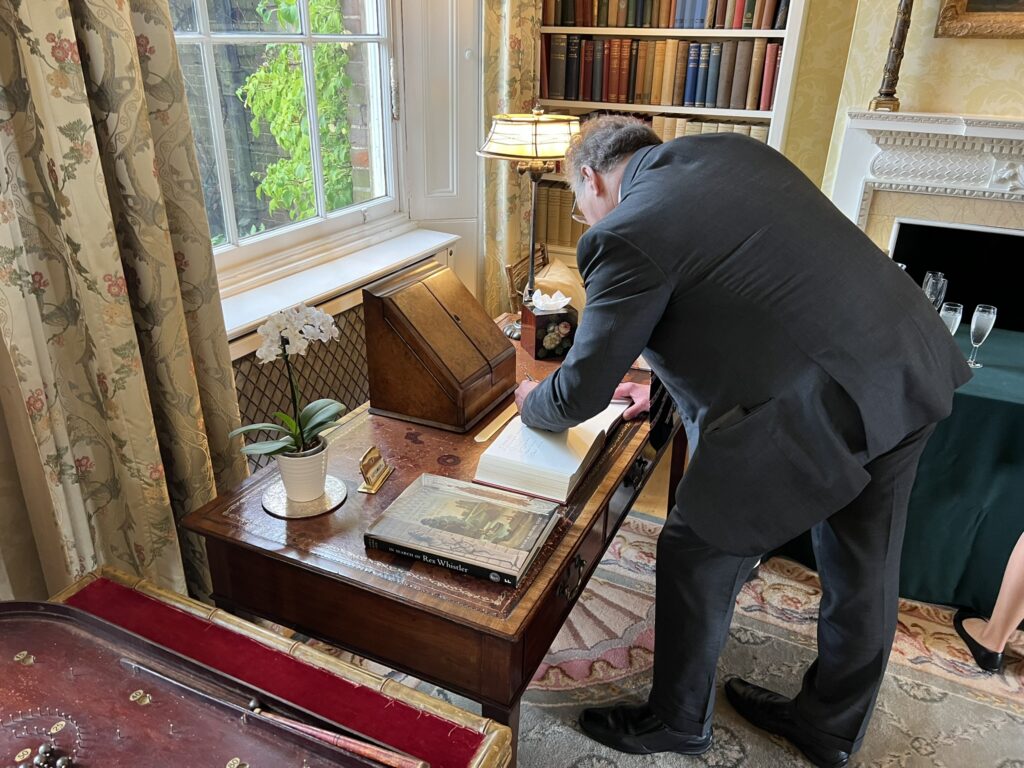
The theme for the lunch was ‘landscape scale partnerships’. Invited guests included key local land owners, charities and Council representatives who are all seeking to improve biodiversity and nature recovery in the interests of the natural environment. Many very useful future partnerships were explored.
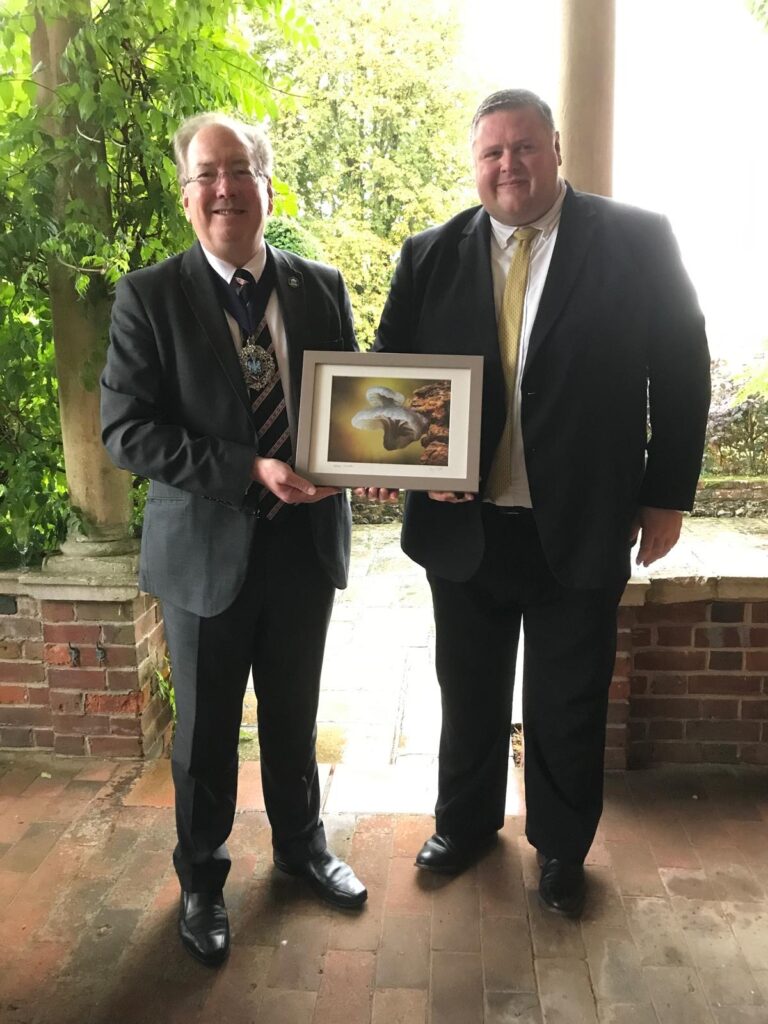
I was delighted to announce that 3 years ago, a mysterious small mycenoid mushroom was discovered at Burnham Beeches by an award-winning photographer by the name of Barry Webb. After much research and DNA testing by specialists across the UK, this new species has been named Hydropus inopinatus and its type location has now been formally cited as being discovered at Burnham Beeches. My thanks to Barry and to Penny Cullington from the Bucks Fungus Group who worked hard to write the description of this fungus.
A very useful visit, packed full of content with lots of follow-up meetings arranged to progress ideas generated. My thanks to all of the staff who worked so hard to bring my ever more adventurous ideas to life and to all of the guests who generously gave their time to support Burnham Beeches.
I will leave a few more of the day’s photographs below for your perusal.
